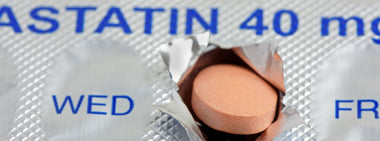Seasonal Shifts: Understanding the Winter Rise in Cholesterol Levels

If you’re like me, you load up on layers as you get dressed in the mornings during colder months. Turns out, on average we don’t only carry around more clothing, we also tend to carry more circulating cholesterol around. At least that’s what researchers at Johns Hopkins Ciccarone Center for the Prevention of Heart Disease have shown.
Behavioral Influences
Their study highlighted that this seasonal shift in cholesterol is closely tied to our behaviors. In the summer, when the weather is warmer, people are more inclined to be active and engage in healthier habits. Conversely, the colder months usher in a tendency to indulge in comfort foods rich in easily digested carbohydrates and fats, coupled with a decline in physical activity.
This all results in a lipid signature associated with higher heart disease risk.
Study Insights
The study, based on data from 2.8 million U.S. adults, discovered that both LDL cholesterol and non-HDL cholesterol, commonly known as the "bad" cholesterol, were 3.5 percent higher in men and 1.7 percent higher in women during the winter. Additionally, triglyceride levels, linked to obesity and inactivity, saw a 2.5 percent increase in men during the colder season.
Given that there is a linear correlation between percentage shifts in LDL cholesterol and heart disease risk, these changes are not inconsequential. We know that there is some seasonal variation in heart attack rates. Seasonal LDL variation could absolutely be a contributor.
Seasonal Affective Disorder and Cardiovascular Health
Beyond dietary and activity changes, the researchers also considered the impact of seasonal affective disorder (SAD) on cardiovascular health. SAD, often associated with mood changes during winter, can lead to a desire for comfort foods and lethargy. SAD is also associated with increased risk for heart disease.
Winter and Cardiovascular Risks
All of this data aligns with prior research indicating that prolonged exposure to cold temperatures can increase the risk of heart attacks. During winter, blood vessels tend to constrict, increasing the workload on the heart. Piling on less physical activity, less healthful eating habits, worse cholesterol profiles and SAD does not help.
Key Insights for Heart-Healthy Living
It’s important to put all this in perspective. Especially as we’ve just gone through a polar vortex! Just because it’s winter, obsessive monitoring of cholesterol levels during winter is not necessary. Just try to do your best to maintain your healthy habits throughout the year. Acknowledging the seasonal impact on health behaviors should simply remind us to make better choices and prioritize cardiovascular wellness - perhaps even more intentionally during colder weather.
After all, heart health is always in season.

Try our Newest Bar!
Cherry Pecan Bar
Discover the perfect harmony of cherries and pecans in our Cherry Pecan Bar. Montmorency cherries, renowned for their antioxidant and anti-inflammatory properties, are combined with premium pecans to create a delicious blend of sweet, tart, and nutty flavors. Packed with white chia seeds, flax, and walnuts, this bar offers more than just taste—it's a superfood-filled snacking option. Our Cherry Pecan Bar is the perfect choice, whether you're on the go or seeking a nourishing treat.
Get heart health tips and articles like this, delivered right to your email.
New articles every week.
You may also like...

You don’t need to avoid foods with cholesterol…except for these




